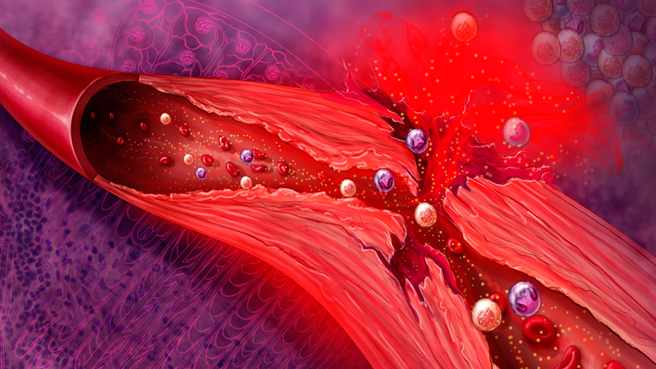-
Mayo Clinic Minute
Mayo Clinic Minute: How vasculitis affects the body
The Vasculitis Clinic at Mayo Clinic is a place where experts in a number of fields of medicine help adults and children diagnose and treat vasculitis, and conduct important research. But what is this relatively rare condition?
Journalists: Broadcast-quality video (1:09) is in the downloads at the end of this post. Please courtesy: "Mayo Clinic News Network." Read the script.
Vasculitis is a group of conditions — all related to inflammation of blood vessels.
"White blood cells, which normally are circulating in the body and protect us from infection, become misdirected. And they actually invade and target the walls of blood vessels," says Dr. Kenneth Warrington, a Mayo Clinic rheumatologist.
The exact cause of vasculitis isn't fully understood, but in some cases, it might be genetic. It also could be triggered by an infection, cancer, immune disorder or a reaction to certain medications. The inflammation causes blood vessels to thicken and restrict blood flow, damaging organs and tissue.

"People may lose vision, there may be lack of blood supply to an extremity, or there could be organ failure, like kidney or respiratory failure," says Dr. Warrington.
Initially, the symptoms can be vague.
"Folks may just feel unwell. They may have a poor appetite. They may start losing weight," he says.
But as it progresses, more parts of the body will have symptoms.
"If there are multiple organs that are affected simultaneously, that's when we would suspect vasculitis," says Dr. Warrington.
Treatment is usually medications that target the immune system and reduce inflammation. Corticosteroids, such as prednisone, are the most common drugs prescribed.







